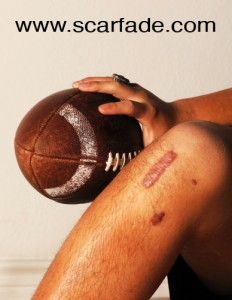
One common complication from wound scars is found at the joints. Called contracture, it is when the formation of scar tissue above and below the surface shrinks and tightens while it develops. The tighter the scarred skin, the harder it becomes to move the joints. This can become painful and restrictive. Joint contracture is common in larger joints with larger scars, like the knee and elbow. As joint movement becomes more and more restricted, the muscles and other tissues are more noticeably affected. Burn patients and those with large and deep wounds are more susceptible to joint contracture. The tendency to develop contracture is also notably hereditary in people with dark skin, with red hair and in those of Asian descent.
Joint contracture is preventable. Once a joint wound has started to heal, the patient can enroll in massage therapy, learning exercises from a professional. Stretches can prevent permanent damage from contracture. While stretching and manipulating the scars can be painful, especially in burn patients, the exercise process can minimize the tightening and restriction of the muscle joints and prevent permanent loss of joint use. In some cases, however, the development of scar tissue is slowed and makes the scars wider, making the scarred area larger and more pronounced. Scar tissue develops gradually and continually. Once the skin is healed, scar cream can be applied daily to minimize the scar’s appearance.
When contracture scars have healed poorly, preventing joint movement, a scar revision procedure can be done. There are two effective methods, depending on the type and location of the scar, as well as the individual’s difficulties in movement. One is to surgically remove the scar and scar tissue and replace it with a flap of skin, or a graft. Another option is to use tissue expansion techniques. In both cases, scar treatment after the fact can reduce the brightness of the scar and help it visually blend into the area better. The patient will need to participate in therapy to reduce the chances of redeveloping contracture scars and regain full function of the joint.
